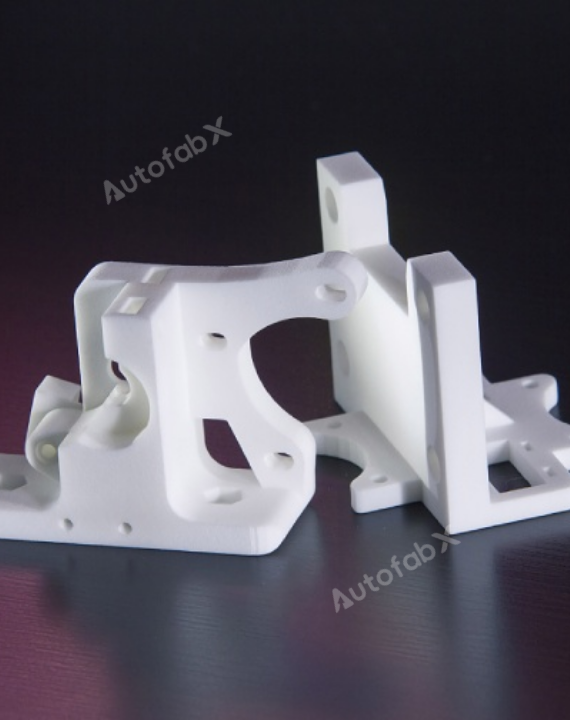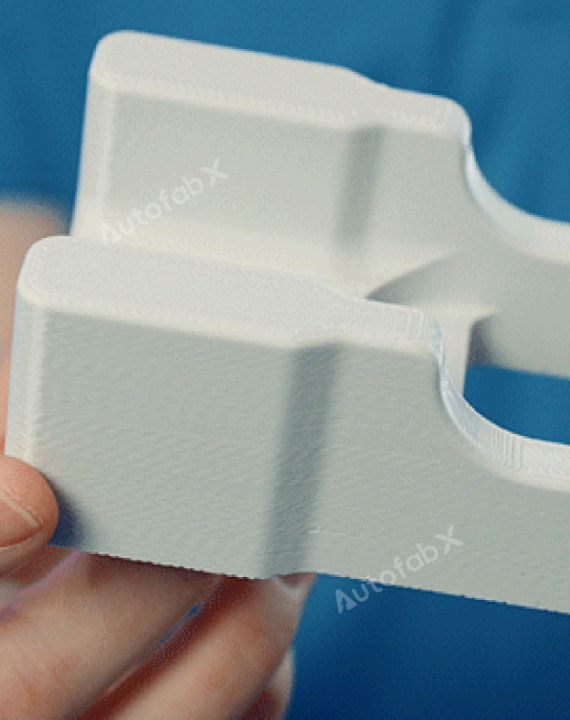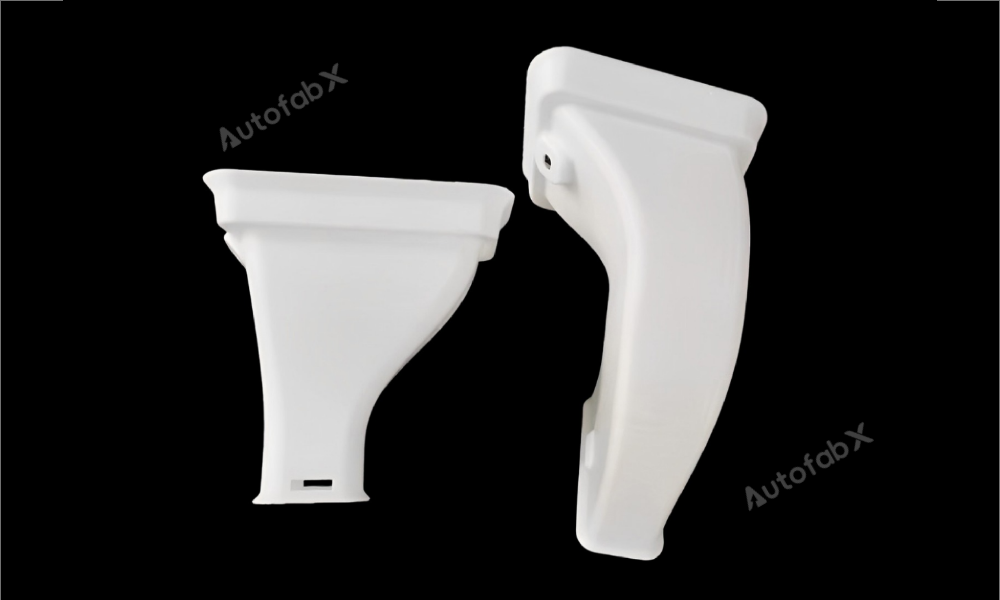
Quick Look
| Density(g/cm³) | Tensile Strength | Young's Modulus | Elongation at Break | Glass Transition Temperature |
|---|---|---|---|---|
| 1.2 | 60MPa | 2048 ± 66 (MPa) | 12% | 113℃ |
About the Material
Advantages:
High Safety: Ideal for applications in electronics, electrical components, and automotive parts where fire safety is crucial.
Thermal Stability:PC-FR performs well in high-temperature environments, making it ideal for components like automotive engine parts and electronic heat sinks.
High Strength: Well-suited for structural parts that need to withstand high loads, such as electronic enclosures and automotive components.
Good Optical Properties: PC-FR has good optical clarity, making it ideal for applications requiring transparent enclosures.
Limitations:
High Cost: Due to the use of flame retardants and additional additives, PC-FR is generally more costly than standard polycarbonate (PC) or other materials like ABS.
Warping: PC-FR tends to warp and shrink as it cools, particularly during the cooling phase of 3D printing.
Poor Adhesion to Build Surface: PC-FR has a tendency to have poor adhesion to certain build surfaces, which increases the likelihood of prints failing or lifting off the bed during printing.
Chemical Composition Table for PC-FR (UL94-V0)
| Component | Composition |
| Polycarbonate | 100% |
| Additives | Varies |
Mechanical Machining Properties Table for PC-FR (UL94-V0)
| Property | Value |
| Machinability Rating | Moderate to difficult |
| Cutting Speed (m/min) | 10~20 |
| Tool Wear Resistance | Moderate |
| Coolant Requirement | Optional |
| Surface Finish Quality | High |
Design Parameters Table for FDM Printing with PC-FR (UL94-V0)
| Maximum Bulid Size(mm) | Minimum Wall Thickness | Minimum Drill Size | Minimum Assembly Gap | Tolerance |
| 400x450x600 | 0.6mm | 1mm | 0.2mm | ±0.3% (lower limit of ±0.1 mm) |
Industry Applications and Case Studies for FDM Printing with PC-FR (UL94-V0)
Aerospace and Aviation:
Application: Interior components, brackets, and enclosures.
Case Study: Airbus & Boeing use 3D-printed PC-FR components to replace metal brackets and reduce weight while maintaining fire safety standards.
Automotive and Electric Vehicles:
Application:Battery housings, dashboard components, under-the-hood parts.
Case Study: Tesla and other EV manufacturers prototype battery casings with PC-FR before finalizing designs in injection molding.
Industrial Manufacturing:
Application:Custom jigs, fixtures, tooling.
Case Study: GE & Bosch use PC-FR 3D printing for flame-resistant jigs in high-temperature assembly lines.
Frequently Asked Questions (FAQs) about FDM Printing with PC-FR (UL94-V0)
What are the benefits of using PC-FR (UL94-V0) in 3D printing?
Using PC-FR (UL94-V0) in 3D printing can significantly enhance the safety, durability, and functionality of parts.
Is PC-FR (UL94-V0) suitable for functional parts?
Yes, PC-FR (UL94-V0) is definitely suitable for functional parts, and in many cases, it is actually preferred for certain applications that require both performance and safety.
What industries benefit from FDM printing with PC-FR (UL94-V0)?
Industries such as electronics and electrical,Automotive,Aerospace,Industrial and Manufacturing.
How accurate is FDM printing with PC-FR (UL94-V0)?
FDM printing with PC-FR (UL94-V0) can achieve tolerances of ±0.3 mm, suitable for most prototyping and functional applications.
What post-processing is required for PC-FR (UL94-V0)-printed parts?
Post-processing may include sanding and smoothing,polishing,coloring and painting,sealing and coating.
Can PC-FR (UL94-V0) be used in high-temperature environments?
PC-FR (UL94-V0) can be used in high-temperature environments, but it is more suitable for applications where the material is exposed to moderate temperatures (up to around 120°C–130°C for prolonged use).
How strong are PC-FR (UL94-V0)-printed parts?
PC-FR (UL94-V0)-printed parts are known for their strength and durability, making them suitable for a range of demanding applications.
Finishing Options
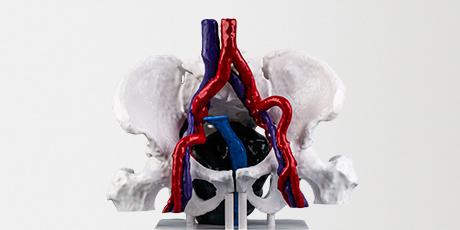
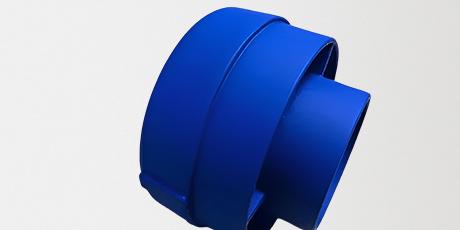
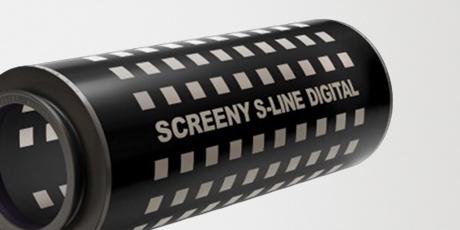
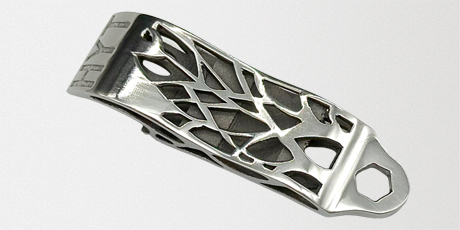




Parts Made by AutofabX
